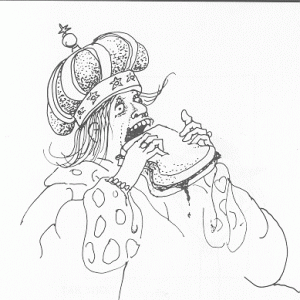Invitation
“If you are a dreamer, come in.
If you are a dreamer, a wisher, a liar,
A hope-er, a pray-er, a magic bean buyer . . .
If you’re a pretender, come sit by my fire,
For we have some flax golden tales to spin.
Come in! Come in!”
–Shel Silverstein, Where the Sidewalk Ends
The “Invitation” poem entreats the reader to enter inside the imaginary, silly world of my favorite childhood poetry book, Where the Sidewalk Ends by Shel Silverstein. Throughout elementary school, these poems lay as a source of joy, inspiration, and silly thoughts, as I would read and re-read this book from one year to the next. The book starts with the “Invitation” poem inviting the good and the bad, the dreamers and the liars to not only read the poems in the book, but also to create, invent, and imagine tales beyond the words written on the book pages.
The over animated drawings pull a child into the world of each poem. The drawing style also creates continuity, in a seemingly random collection of silly poems. Silverstein’s poems are full of rhyme and rhythm, following no particular pattern or order. The changing patterns always kept me hooked, as I was able to point out and speak aloud the changing rhyme schemes. The lack of patterns also reiterated that these poems were not about rules and regulations but about silliness and imagination.
For months, when I was in about 3rd or 4th grade, I remember reading a Shel Silverstein poem almost every night before bed. His poems took me to the place Where the Sidewalk Ends; a place where I was able to grasp at the depth of my imagination, take hold of an idea, and let it soar. I would fall asleep in a stupor of pure imagination and creative thought. Sometimes, I would wonder how Shel Silverstein, himself, came up with his poems, and I wondered if I could possibly do the same. I remember trying to write poetry of my own, inspired by the poems from this book. My poems were never any great literary feats, and I refused to let anyone else read them, but I remember thinking that one day I would be able to write poetry just like Shel Silverstein. I have now, though, come to terms with the fact that his wacky, fun style is not replicable.
Reading his book as a kid, I loved all of the silliness of his poems, yet one poem in the collection, I remember not particularly liking. It was the poem, which the collection was named after, “Where the Sidewalk Ends.” It was serious and, to me, boring without a ridiculous story to follow. At the time, though, I did not realize the true meaning of this poem, which I now quite enjoy to read.
Where the Sidewalk Ends
“There is a place where the sidewalk ends
And before the street begins,
And there the grass grows soft and white,
And there the sun burns crimson bright,
And there the moon-bird rests from his flight
To cool in the peppermint wind.
Let us leave this place where the smoke blows black
And the dark street winds and bends.
Past the pits where the asphalt flowers grow
We shall walk with a walk that is measured and slow,
And watch where the chalk-white arrows go
To the place where the sidewalk ends.
Yes we’ll walk with a walk that is measured and slow,
And we’ll go where the chalk-white arrows go,
For the children, they mark, and the children, they know
The place where the sidewalk ends.”
–Shel Silverstein, Where the Sidewalk Ends
This poem, in short, tells its reader that there is always a place for one to escape from the trappings of everyday life. That place is one’s own imagination or “Where the Sidewalk Ends”. In the poem, the children are the ones who know where the sidewalk ends because they use their imagination on a daily basis. I think that this poem teaches its readers a great lesson about the significance of using one’s imagination, as not only a child but also as an adult. Looking back at this poem, I am inspired to just imagine and be silly sometimes.
Ultimately, I think that is what most of Shel Silverstein’s poems are trying to get across. Through his random, wacky rhymes Silverstein shows us how to let our minds run wild in a creative frenzy. Silverstein portrays the importance of not only letting this happen, but also the importance of always actively seeking to stretch the depth of our own imaginations past the point “Where the Sidewalk Ends”.
P.S. Shout out to The Giving Tree!!! Another great Shel Silverstein book!!



Great post! I used to love Shel Silverstein! In grade school I sued to love to write poetry, and some of my favorite poems were by him. I used to love that his poems were really wacky but had a n important message at the same time.
I remember reading Where the Sidewalk Ends (and The Giving Tree) when I was in elementary school! Those were such fun books that meant so much to us when we were little. Now, looking back at some of the poems, I really like how the poetry can be related to both little kids and adults. The subject matter might be relatively simple, but the poems convey messages that we should keep in mind no matter how hold we are! I really like how you incorporated some of the poems into your post instead of just talking about them. Great post!